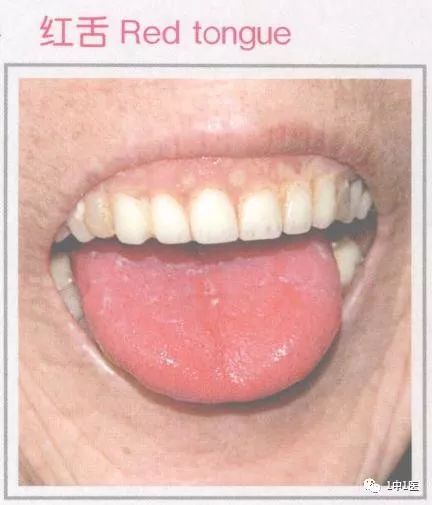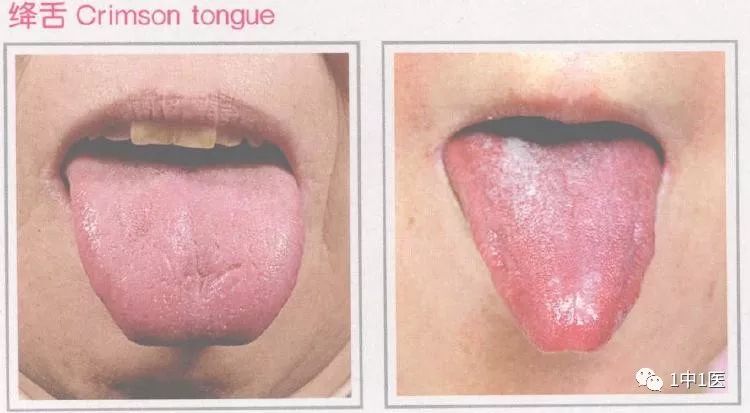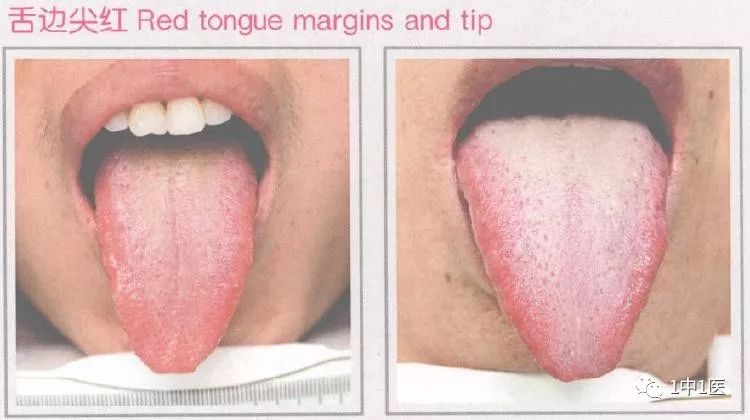Learning Tongue Diagnosis from Scratch 0 – Introduction
Learning Tongue Diagnosis from Scratch 1 – Principles of Tongue Diagnosis
Learning Tongue Diagnosis from Scratch 2 – Overview of Tongue Diagnosis Methods (Part 1)
Learning Tongue Diagnosis from Scratch 2 – Overview of Tongue Diagnosis Methods (Part 2)
Learning Tongue Diagnosis from Scratch 3 – Tongue Color 1
Learning Tongue Diagnosis from Scratch 4 – Tongue Color 2
Please share and like, as more views and likes motivate me to update. Thank you.
In this lecture, we will discuss the tongue colors, specifically the deeper shades, including the fourth: Red Tongue, the fifth: Crimson Tongue, the sixth: Red Tip of the Tongue, the seventh: Red Edge of the Tongue, and the eighth: Glossy Red Tongue. Although there are many, they generally convey similar meanings. Let’s first look at the first one: Red Tongue.

A Red Tongue indicates a deeper color, with less white and more red. We say a normal tongue is light red, and a Red Tongue means that the lightness is gone, replaced by red. A Red Tongue is generally a bright red color, which is contrasted with the later discussed Crimson Tongue. A Red Tongue typically indicates a heat syndrome; the redder the tongue body, the more severe the heat. This is understandable: when blood encounters heat, it flows more rapidly, and heat can cause blood vessels to dilate, leading to increased blood flow and energy, making the tongue appear brighter red. This condition is referred to as Excess Heat Syndrome, caused by pathogenic heat; there is also a deficiency type, known as Deficient Heat, which we generally call Yin Deficiency with Excess Fire or Internal Heat due to Yin Deficiency. The reason this heat is considered deficient is that the body’s Yin and fluids are relatively low, which in TCM is described as: Yin Deficiency and Fluid Depletion. This means that the material aspect (Yin) is lacking, making the energetic aspects (Qi, Fire, Yang Heat) appear more prominent, but not truly increased. It’s like in a class where you were always at the bottom, and then a classmate who was often absent due to illness is no longer there, making it seem like you have improved, but in reality, you haven’t. Thus, this fire is deficient, and the Deficient Fire rises, causing the tongue to be red. Generally, a red tongue indicates two situations: excess and deficiency, though this can be further detailed. If using heat-clearing herbs, it is correct, but for Excess Heat, stronger herbs are needed, while for Deficient Heat, one should also add herbs that nourish Yin or restrain Deficient Fire. So, although they are both categorized as heat, the details differ.
In tongue diagnosis, there is a classic book called “Guidelines for Tongue Diagnosis,” written by Cao Bingzhang in 1920. It is the first tongue diagnosis book with many illustrations, as there were no cameras in the past, and it wasn’t until the early 20th century that images were compiled. This book describes the red tongue of Yin Deficiency with Excess Fire: a bright red tongue without coating, with no moisture at the tongue’s base, and a dry tongue surface indicates Yin Deficiency with Fire. This refers to a type of red tongue called Deficient Fire or Yin Deficiency Fire. How to differentiate? You look at the tongue; if there is no coating and it is dry, that indicates Deficient Fire or Yin Deficiency; otherwise, it is Excess Heat, indicating true pathogenic heat in the body. This is what we discussed regarding the Red Tongue.

Crimson Tongue. What does crimson mean? It is actually a deeper shade of red than a Red Tongue, with a slightly dark red hue, not bright red. Generally, when red becomes deeper, it appears darker, so this Crimson Tongue can be referred to as dark red. It can generally be classified as a type of Red Tongue, but more severe. The cause is also due to more intense pathogenic heat, with more vigorous Qi and blood flow, leading to a fuller blood network in the tongue, making it appear even redder and more crimson. From the perspective of pathogenic heat, this indicates a more severe condition; from the perspective of the body’s Yin, this type of Crimson Tongue often represents heat entering the Ying and Blood levels, damaging the Yin, specifically indicating damage to the Ying and Blood, leading to concentrated blood. Therefore, not only is the blood hot, but it is also concentrated, which makes the tongue appear crimson. Furthermore, if your tongue is even drier, not only is it crimson but also lacks moisture, being dry and without coating, this indicates a more severe depletion of Yin, referred to as Yin Deficiency and Fluid Depletion, with Deficient Fire rising in the tongue network, making the tongue even more crimson. In summary, there are three levels: the first level from the perspective of pathogenic heat, the heat is more intense; the third level from the perspective of the body, the Yin is more deficient, and the fluids are less; the middle level involves both aspects, where heat enters the Ying and Blood and depletes the Yin. In conclusion, a Crimson Tongue is more severe than a Red Tongue, indicating more intense pathogenic heat and more significant Yin damage, with more severe Yin Deficiency and Fluid Depletion.
For this Crimson Tongue, if there is a coating, it often indicates an external heat pathogen entering the Ying and Blood, or internal damage from miscellaneous diseases, which we call Excess Heat Syndrome, where the main issue is external pathogens or excess heat; “Guidelines for Tongue Diagnosis” states that a Crimson Tongue is deep red, with the heart governing blood, and a dry tongue coating indicates that the pathogen has entered the Ying level. If a Crimson Tongue has little or no coating, it often suggests significant damage to the Yin of the stomach and kidneys. This is likely in the later stages of a heat illness, where prolonged illness leads to more deficiency: initially, it is Excess Heat Syndrome, primarily involving excess heat, but as the illness progresses, Yin damage becomes more severe, and the main issue shifts to deficiency, with Yin Deficiency and Excess Fire or Deficient Heat. Deficient Heat is contrasted with the earlier Excess Heat. The “Guidelines for Tongue Diagnosis” states: a glossy crimson tongue indicates stomach Yin depletion; a tongue that is crimson but not bright, dry and withered indicates kidney Yin depletion. This differentiates whether the damage is to stomach Yin or kidney Yin: stomach Yin is the foundation of postnatal life, while kidney Yin is the foundation of prenatal life. It states that a glossy crimson tongue, without coating, is like a mirror, indicating damage to stomach Yin; while a tongue that is crimson but not bright, appearing dry and withered, indicates more severe damage to kidney Yin. This is more detailed and relates to what we will discuss next, the Glossy Red Tongue.

The Glossy Red Tongue refers to a tongue that is not only red but also has little or no coating, resembling a red mirror. This often indicates that stomach Yin has been damaged, with prolonged heat damaging Yin, leading to Yin Deficiency and Fluid Depletion, with Deficient Fire rising. Therefore, at this point, it cannot simply be said to be Excess Heat; there must be a factor of Yin Deficiency involved, as it has already lost its coating, becoming a mirror tongue, which is the Glossy Red Tongue. So far, we have discussed three types of red tongues: one is the ordinary Red Tongue or Bright Red Tongue, the second is the Crimson Tongue or Dark Red Tongue, and the third is the Glossy Red Tongue or Mirror Red Tongue, which indicates a level of Yin damage compared to the first two. This concludes our discussion on red tongues.

Next, let’s spend a little time discussing localized redness within the Red Tongue. Previously, we discussed the overall redness of the tongue, which can be divided into three types; now we will focus on localized redness. The first is the Red Tip of the Tongue: when you stick out your tongue, the tip is red, and you may see red spots. This type of tongue is called Red Tip of the Tongue. The tip of the tongue corresponds to the upper jiao, specifically the heart and lungs, so a Red Tip of the Tongue often indicates excessive heart fire or heat in the heart and lungs. The more intense the redness at the tip, the stronger the fire. Generally, herbs like Dan Zhu Ye (Lophatherum gracile), Deng Xin Cao (Junci Medulla), and Zhi Zi (Gardenia) can be chosen, such as the formula Dao Chi San (Guide Out the Red Powder). This is often seen in people who are very anxious or stressed; after a few days, you will notice the tip of the tongue has turned red, indicating heart fire. This Red Tip of the Tongue is relatively straightforward.

The next one is not only a red tip but also a red edge, which is called Red Edge of the Tongue. When both the edge and tip of the tongue are red, this situation suggests two possibilities: first, it may indicate an external pathogenic disease, especially in the early stages of heart and lung heat, which is known as the initial stage of exterior heat syndrome; second, the edges of the tongue represent the internal organ areas of the liver and gallbladder, so a red edge may likely be caused by excessive heat in the liver channel. As mentioned earlier, a Red Tip of the Tongue corresponds to excessive heart fire, so a Red Edge of the Tongue indicates heat in both the liver and heart channels. This is quite common; many people become anxious or angry, leading to what is known as excessive liver fire. When liver fire rises, heart fire also increases. Why? In TCM, the five elements are interrelated: Wood generates Fire, so when liver fire is present, heart fire will also be strong. Therefore, once you reduce liver fire, heart fire will naturally diminish. In summary, the Red Edge of the Tongue indicates the above two situations: one is the early stage of an external heat illness, and the other, especially if the patient does not have any external symptoms, is likely due to liver fire or heart fire issues caused by stress or anger.
Alright, today we have completed the entire chapter on red tongues, covering five types: Red Tongue, Crimson Tongue, Glossy Red Tongue, Red Tip of the Tongue, and Red Edge of the Tongue.
Please share and like, as more views and likes motivate me to update. Thank you.
